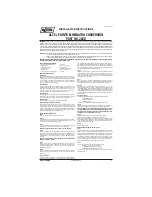
wards, e.g. when braking suddenly or in the
event of an accident.
R
The vehicle occupant would thereby be
pushed into the seat belt by the rear bench
seat/rear seat or by the seat backrest. The
seat belt cannot protect as intended and
could result in additional injury.
R
Objects or loads in the boot/luggage com-
partment cannot be restrained by the seat
backrest.
This poses an increased risk of injury.
Before every trip, make sure that the seat
backrests and the rear bench seat/rear seat
are engaged before every trip.
!
Before folding the backrest in the rear
compartment forwards, make sure that the
rear compartment armrest and the
cupholder are folded in. They may other-
wise be damaged.
Observe the loading guidelines (
Y
page 306).
The left-hand and right-hand rear seat backr-
ests can be folded forwards separately to
increase the luggage compartment capacity.
Folding the rear seat backrest forwards
and back
Folding the rear seat backrest forward
X
If necessary, press the backrest head
restraints down fully (
Y
page 110).
X
Move the driver's or front-passenger seat
forward if necessary.
X
Pull left-hand or right-hand release han-
dle
;
of the seat backrest forwards.
The corresponding seat backrest
:
is
released.
X
Fold backrest
:
forwards.
X
Move the driver's or front-passenger seat
back if necessary.
X
Insert the seat belt into seat-belt holder
:
.
Folding the rear seat backrest back
!
Make sure that the seat belt does not
become trapped when folding the rear seat
backrest back. Otherwise, it could be dam-
aged.
X
Move the driver's or front-passenger seat
forward if necessary.
X
Fold seat backrest
:
back until it engages.
Red lock status indicator
;
is no longer
visible.
X
Adjust the head restraints if necessary
(
Y
page 110).
X
Move the driver's or front-passenger seat
back if necessary.
310
Stowage areas
Stowing
and
feat
ures
















































